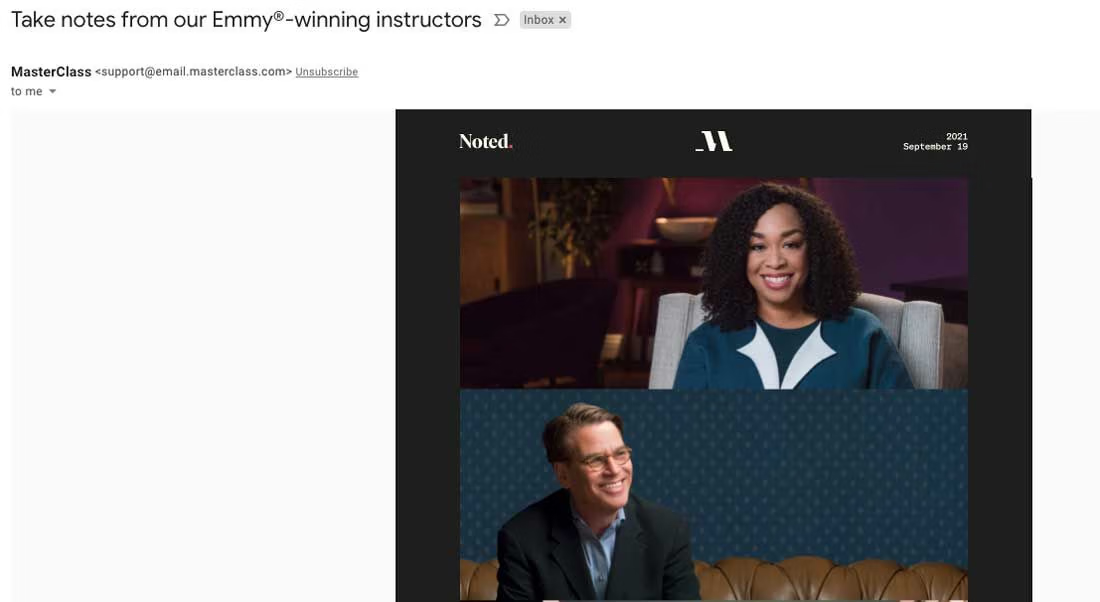8 Common Email Marketing Mistakes and How to Avoid Them
Updated September 29, 2021
7 min read

Email marketing mistakes can happen now and again, but your job as a marketer and entrepreneur is to make sure you know which are the common ones and how you can avoid them.
You might have made one of these mistakes before, but don’t worry because anyone is susceptible to these, even experts!
Research shows that 83% of B2B companies use newsletters, and 40% say that email marketing is most critical to their content marketing success.
Newsletters are a cost-effective way to nurture your contacts and increase engagement and conversions when done right.
Email marketing mistakes you should avoid
Are you having trouble engaging with your audience or turning your subscribers into customers? Your job isn’t finished once you’ve gotten a user’s email address; in fact, your job is only beginning.
In this article, we outline 8 common email marketing mistakes and give you tips on how to avoid making them.
1. Poor subject lines
We all receive numerous emails each day, as a result of which, your subscribers only probably look at your email subject for a few seconds before they decide if they want to open it or not.
You may already know this, but it is always good to emphasize: the subject line of your email is the most important phrase you will create in your campaign! And do you know why that is? Because 47% of users open an email based on only the subject line.
The subject of the email is directly linked to its open rate: the more interesting it is, the more people are likely to open your email.
Make sure your subject line is eye-catching, but relevant. There is no point in making a grand claim if you are not going to fulfill it in the contents of your email.
It should be short, clear, and straightforward (no more than 50 characters), and should provide value.
 For example, look at this email from Masterclass, with the subject line: Take notes from our Emmy-winning instructors.
For example, look at this email from Masterclass, with the subject line: Take notes from our Emmy-winning instructors.It instantly catches your attention, provides value and makes you curious to open it as you wonder – which instructors exactly are they talking about?
2. Incorrect or broken links
This happens more often than you may think, and while it might not seem like a big deal at first – it can be, because it makes you seem unprofessional.
If, for example, the broken link is the ‘unsubscribe’ link in the email, it can be a frustrating experience for your subscribers if that is something they want to do.
This is why sending a test email prior to sending out your campaign is vital. It provides you a chance to test all the elements in your email from the subject line to CTA buttons and of course, your links.
Make it a habit of clicking on every link in your test email to ensure your links go where you want them to; this way you will avoid making the mistake of sending a broken link in your next campaign.
3. Forgetting a call-to-action (or having an unclear one)
You need a call-to-action (CTA) for any piece of content that you create. Without a CTA, your audience won’t know what to do next – making this one of the biggest email marketing mistakes that you can make.
Before you start composing your email, start with a clear goal in your mind. What is the outcome that you want?
Do you want to promote a piece of content that you’ve written on your blog? Do you want to inform the reader of an upcoming launch or event? Do you want to make a promotional offer?
Design the elements of your email (the images, copy and the CTA) in such a way that the readers are seamlessly directed towards this outcome.
Here are some suggestions on making a great call-to-action:
- Make your CTA easy to find
- Use the right words, such as ‘Redeem your offer’ or ‘Buy now’ (in some situations you need to create a sense of urgency)
- Don’t confuse readers by giving them multiple actions
- When it is appropriate, repeat your CTA
All in all, you are trying to make it as easy as possible for your reader to go straight from the email to your website or product.
 For example, this email from Selfridges has the CTA ‘Shop now’ that creates a sense of urgency, and is also repeated two more times throughout the email.
For example, this email from Selfridges has the CTA ‘Shop now’ that creates a sense of urgency, and is also repeated two more times throughout the email.4. Failing to optimize for mobile users
A large number of people will be reading your email campaigns on mobile devices. So, if you don’t optimize the email to account for that, you are making detrimental decisions for your business. Take a look at the statistics below:
- More than 50% of emails are opened on a mobile device
- More than 70% of recipients will delete the email if the content is not optimized
- Up to 20% of users will unsubscribe if the emails consistently do not load properly
The numbers don’t lie, and you cannot afford to make these small, yet significant email marketing mistakes.
The good news is that there are several actions that you can take to ensure that the email looks good on every screen. You should:
- Optimize images – Ensure that the image size is reasonable and add “alt” text. Furthermore, avoid using more pictures than text. A large number of the recipients will have images turned off by default on mobile devices.
- Use responsive design
- Use short paragraphs
- Test before sending
5. Focusing too much on sales
A lot of the emails we see today are similar, with a lot of clichés or sales-heavy language. With the amount of emails each user receives, you can’t afford to have your email be just another one of those.
While you might see your product, service, or content as being unique, your reader will likely see it as just another voice that gets lost in their inbox. Unless, of course, you make an extra effort and make yours special.
You can do this by making your email personal – talking to them like a friend instead of a salesperson or a TV commercial.
Instead of saying how great your product is, tell your reader what benefits they can reap from it. Make your sales focused on what value you can provide.
To understand what your audience is really looking for, you can start by creating customer personas and understanding what they do and are looking for. Understanding what drives people’s decision-making is incredibly important to marketers.
6. Not segmenting your lists appropriately
To avoid making this mistake - the first step is to understand that sending a larger volume of emails does not mean you’re likely to have a more successful campaign, and that is where segmenting your email list becomes necessary.
Being relevant to your subscribers is critical in your marketing efforts, as not many people will react to content that is not tailored around their needs and preferences. Having a specific set of audience in mind when you create your campaign will get you far more satisfying results, right away.
A Mailchimp study shows that segmented campaigns are opened 14% more, with CTRs increased by 65% compared with non-segmented campaigns.
The definition of what data should be analyzed to make a cluster is not a secret. Some segmentation techniques are relevant for B2B companies, while others are more suitable for B2C. Likewise, some clusters apply to services companies, but would not make sense to those that sell physical products.
So now you know, don’t make this mistake. If you’re looking for ways to segment your email list here, you can find that here.
7. Not verifying your email lists
Imagine this: you do all this hard work and work on a great strategy, concise copy, and beautiful images for your email campaign. Yet, when it is sent out, you see the bounce rate is higher than it should be, the clickthrough rates lower.
If you don’t already maintain email list hygiene, or are not cleaning your lists often enough, use Emailable now. This is one of the email marketing mistakes that can be corrected within minutes of reading this post.
For a stellar sender reputation, you must make sure you are verifying your email lists at a regular interval. This interval will depend on factors such as list decay (as mentioned above) and the frequency with which you are collecting new emails.
Every time you miss an opportunity to present your campaign to a subscriber, you lose out on a potential sale, or opportunity to build a relationship with them which might lead to a future purchase.
8. Not analyzing your email metrics
There is a lot to plan when it comes to crafting a robust email marketing strategy for your company, but what is the point of it all if you are not tracking key email metrics?
However, it doesn’t matter how perfect your email campaign is if you can’t see the results of your efforts. You need to make sure that you are tracking key email metrics, and that your efforts are helping further your goals.
Plan for email marketing mistakes
Rather than reacting after a mistake happens (such as a typo or a broken link), it’s best to have a plan in place, in case things go awry. This will ensure that you can act quickly and calmly if you run into trouble.
Wrapping up
All in all, by avoiding common email marketing mistakes and following best practices, email marketers will put their company in a position that allows them to reap the benefits of all those long hours devoted to creating their email marketing campaigns.
Mistakes can happen, but anticipating them beforehand, and having a plan in case they do, will allow you to make the most out of your email marketing strategy.